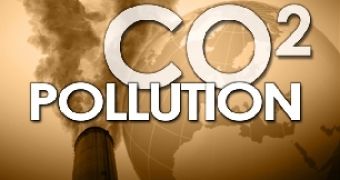Public lands in the United States are now major carbon emitters, researchers explain in a paper released by the Center for American Progress this past December 5.
Thus, investigations have revealed that, although the country's public lands still function as carbon sinks, meaning that they absorb some of the carbon pollution hovering over them, they nonetheless emit 4.5 times more of this harmful chemical compounds than they are able to absorb.
Otherwise put, they can and should be classified as a major contributor to climate change and global warming, specialists argue.
In their paper, researchers with the Center for American Progress detail that, according to their investigations, public lands across the US have switched from being carbon sinks first and foremost to being a major source of carbon pollution due to the development of the oil, coal and natural gas industries.
More precisely, the researchers argue that these lands owe their impressive carbon footprint to the fact that companies are busy extracting said resources from them, and then using them as an energy source.
“The extraction of coal, oil, and natural gas from public lands – and their subsequent combustion in power plants, vehicles, and other energy-consuming activities – is the primary cause of this imbalance,” the Center's website reads.
Information provided by the Energy Information Administration says that 42.1% of the US' yearly coal production comes from public lands and the outer continental shelf. The same is true for 17.8% and 26.2% of the country's natural gas and coal output, respectively.
“In sum, these extracted fossil fuels contribute 23% of our nation’s greenhouse gas emissions, according to an analysis conducted by Stratus Consulting and commissioned by The Wilderness Society,” the Center for American Progress tells us.
In light of these findings, specialists urge that the Obama administration implement legislation that would help public lands across the country go back to being carbon sinks instead of carbon emitters.
To achieve this goal, the Obama administration must restore ecosystems that have been affected by oil, natural gas and coal exploitations, and roll out strict greenhouse gas emissions for these industries.
“We recommend that the administration establish a carbon-emissions reduction plan for onshore and submerged public lands that helps meet the president’s commitment to reduce U.S. carbon emissions to 17 percent below 2005 levels,” the researchers say.

 14 DAY TRIAL //
14 DAY TRIAL //